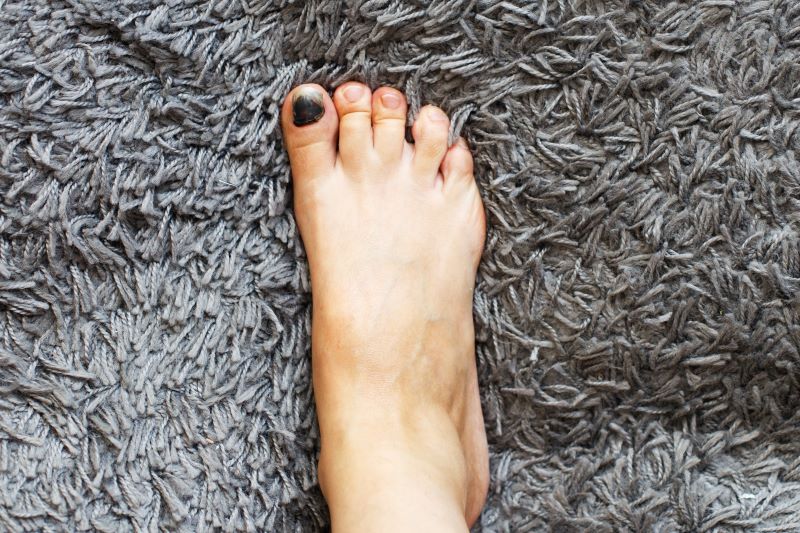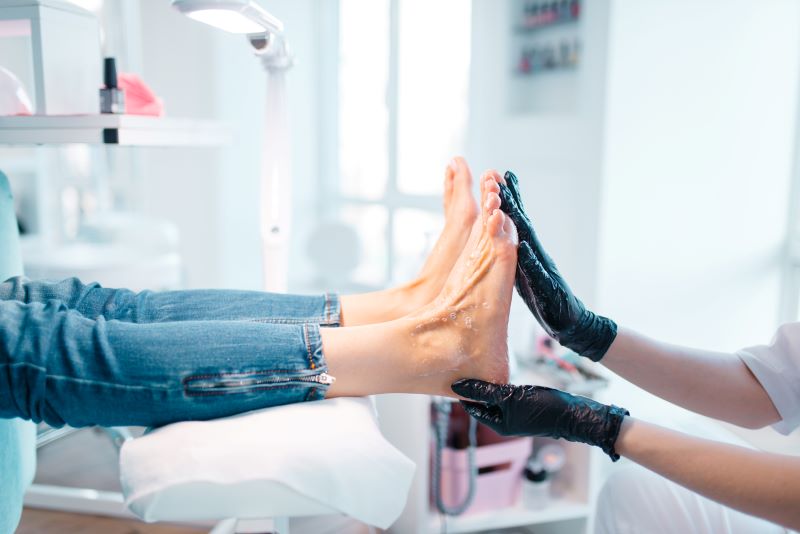Have you noticed changes in one or more of your nails or in your skin? Changes in texture, color, or shape may be initially harmless, but can also be an indicator of disease. It is important to know the signs and stages of conditions that can cause severe damage over time if left untreated. These impactful conditions include yellow nails, black nails, and onycholysis. Learning more about these conditions can provide you with quicker and more effective relief, so you can maintain a high quality of life. In this article, we’ll discuss skin and nail conditions you should see a doctor for, including their causes and treatment.
 What Are Yellow Nails?
What Are Yellow Nails?
Fingernails and toenails can tell you much about your health. When your nails grow discolored, it usually means you have contracted a nail fungus or an infection. It may also mean you’re having an allergic reaction or your nails are stained by a product such as nail polish. Sometimes your nails can turn yellow as a symptom of a more serious condition, like internal malignancies, rheumatoid arthritis, lymphatic obstructions, or a chronic lung condition. If your nails have become damaged due to harsh products or dyes, new nail growth should have a clear, healthy color. If the nails continue to grow out yellow, there may be a different cause.
Mineral or vitamin deficiencies can cause your nails to appear yellow. Introducing a vitamin supplement into your diet can potentially stop the problem. However, any nails that remain yellow despite consistent treatment can be an indicator of psoriasis, diabetes, or a thyroid condition. In rare cases, yellow nails may indicate that skin cancer is present. Lymphatic problems, respiratory difficulties, or nails that continue to grow out yellow can be signs of the condition known as yellow nail syndrome. With yellow nail syndrome, the affected nails often begin to thicken and new nail growth begins to slow. The nails may lack a cuticle or detach.
Treatment of Yellow Nails
If your yellow nails are stained by nail polish or another chemical, the staining resolves on its own with time. If they’re caused by a fungus or infection, you should engage in preventative foot care by avoiding moist environments, wearing properly-fitting shoes, and using antifungal medication.
 What Are Black Nails?
What Are Black Nails?
When you have black toenails or fingernails, they can be unsightly and range in how painful or uncomfortable they are. There are several things that can cause black nails, and these may clear up on their own or are otherwise often relatively easy to treat with the help of a doctor. It’s vital for a person who develops a black nail to know some of the potential causes and seek prompt treatment to avoid a worse condition. It is also a good idea to seek a doctor to examine your condition. A doctor can effectively diagnose your black nail or other condition and develop a suitable treatment plan. A black nail can be benign or it may be a serious condition.
Black nails can be caused by wearing ill-fitting shoes. Ill-fitting shoes can cause repetitive trauma due to long-term pressure. Poorly-fitting shoes can also cause other problems, such as small or bloody blisters under one or more of your nails. In more mild cases, the affected nail will grow out over time. However, you should see a doctor if the nail begins to detach from the nail bed. A black nail may also be caused by a blunt force injury such as a heavy object falling on the nail and causing blood to pool near the nail bed. Other causes of black nails are fungal infections, pigmentation changes, melanoma, kidney or heart disease, diabetes, or anemia.
Treatment of Black Nails
Knowing the cause determines whether you should see a doctor for your black nails. If you also have diabetes, you should see a doctor. A doctor can help diagnose and treat your black nail. Any black nail caused by an underlying condition or that doesn’t go away should be looked at. Untreated black nails can cause permanent damage or spread to other body parts.
What Is Onycholysis?
The condition known as onycholysis occurs when one of your fingernails or toenails separates from its nail bed. Onycholysis usually only affects one nail and can affect anyone. However, this condition is more common in adults, females, and people who have lichen planus, psoriasis, tumors, or a nail fungus in their nail beds. Onycholysis can last for several months or over a year. Conditions that affect the skin below your nails may eventually cause onycholysis. Some of the symptoms are thick, tough nail beds, nails peeling away from their nail beds, discoloration in the nail beds or nails, crumbling nails, pits or dents in a nail, or hemorrhages under a nail.
Onycholysis itself isn’t usually painful, but the causes can be irritating or painful. If you develop onycholysis from a fungal infection or injury, you might experience some irritation and pain. Some of the common causes of onycholysis are a reaction to chemicals, traumatic injury, a medication, nail psoriasis, or a fungal infection. Other causes may contribute to you having this medical condition in several or all of your nails. These causes include hyperthyroidism or iron deficiency. Onycholysis is not a fungal infection, but a fungal infection can cause onycholysis. The cause of your unique condition can determine if it is contagious.
Treatment of Onycholysis
If your onycholysis is caused by an injury, the detached portion will grow out. If your onycholysis is caused by a fungus, you may take an oral or topical antifungal medication. Fully finish the course of medicine for lasting treatment.
 When You Should See a Doctor
When You Should See a Doctor
For skin and nail conditions such as yellow nails, black nails, and onycholysis, regularly examine the area for improvement or a worsening condition. If your condition doesn’t improve, becomes worse, or you have another underlying condition, see the Foot & Ankle Specialists of Illinois.

